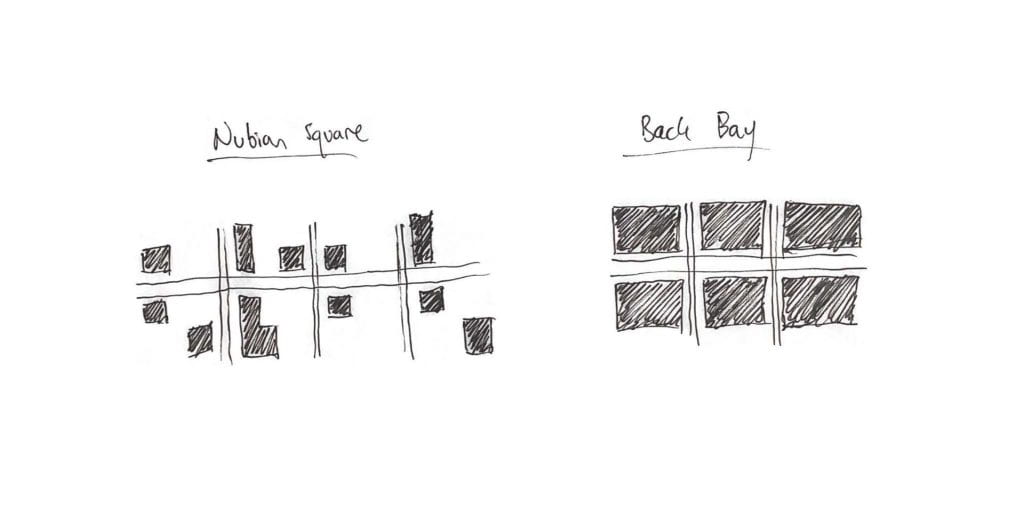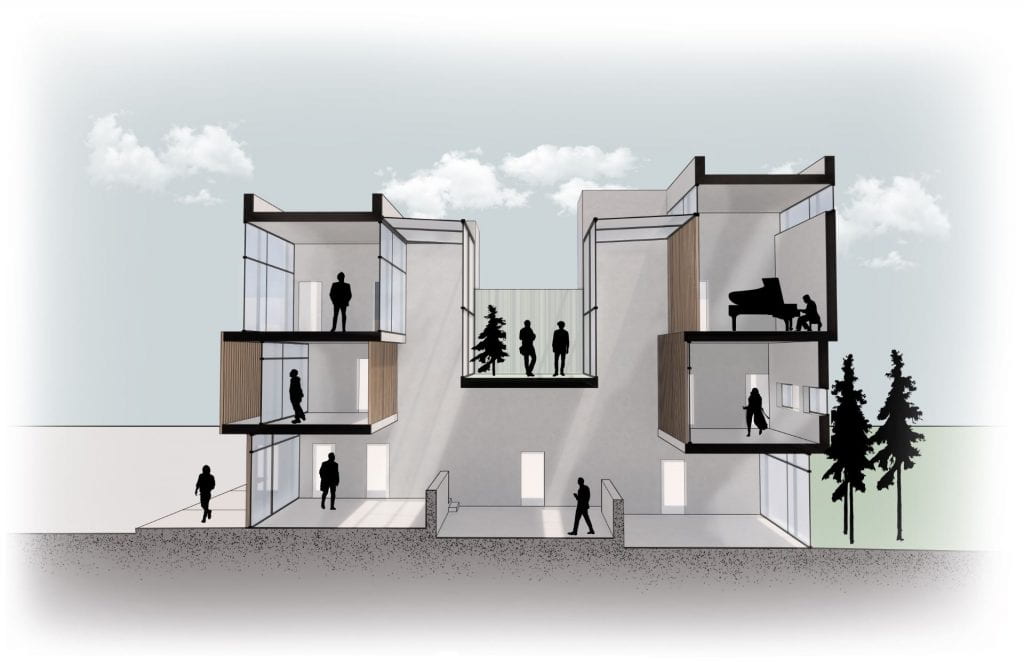By Greg Abazorius
Nubian Square, the newly renamed commercial center of Boston’s Roxbury neighborhood, is undergoing a renaissance.
“With a number of new architecture and urban design interventions, including the recent transformation of Bolling Building and the Roxbury Branch Boston Public Library, the square is in the process of reclaiming its former title of ‘Boston’s Second Downtown,’” said John Ellis, professor in Wentworth’s School of Architecture and Design.
For his Studio 04 Spring 2021 class, Ellis asked students to design “A House for a Musician and a Poet” within a 25-by-60-foot plot on Washington Avenue situated between the Black Market Art Gallery and Nubian Square Art Gallery.
But Ellis challenged students to focus on relationships between architecture and art, showcasing the stories of New York poet Willie Perdomo and Los Angeles composer/musician Jon Sakata, the latter of whom spoke directly to the studio class.

The results were driven by these personal accounts, as the work of Wentworth student Quincy Thomas ’23 (pictured here) displays. Thomas explains his design:
“Inspired by the fragmentary nature of Nubian Square, the design creates isolated and shared spaces to facilitate individual as well as collaborative work between the clients. Located on the street facade are spaces for the poet, as his poetic way of being has to do with his strong connection to the street and his environment, whereas the musician’s spaces are located toward the rear garden, as his inspiration comes from within and a sense of privacy.
“Placed in the heart of the building, the dream space is an intimate, reflective area that fosters collaboration and the exchange of ideas. The room is independent of the surrounding spaces, while natural light fills the space from the sky above. All of these fragments are then lifted to produce living space on the ground floor that creates a transition from the front cityscape to the rear garden.”


